Stories
Eighties Excess
1980s
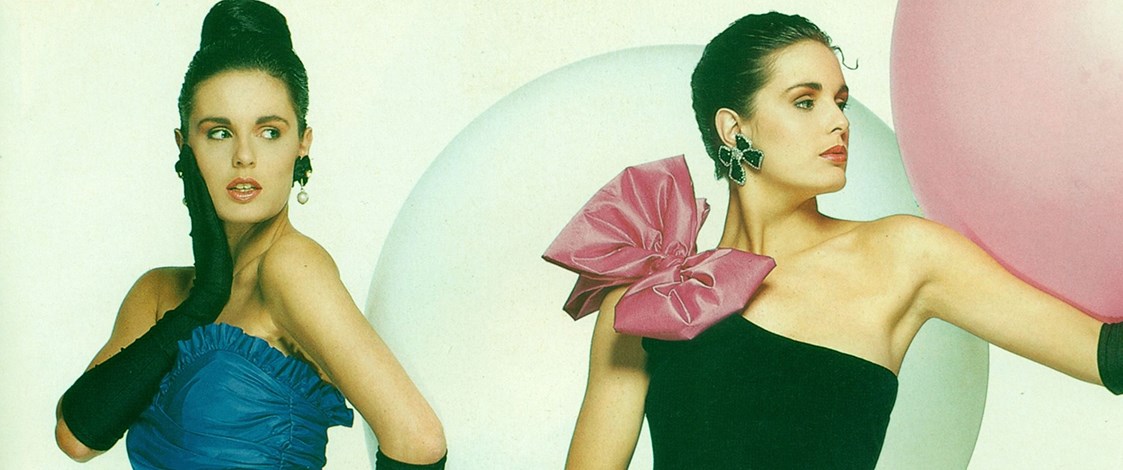
Contemporary designers frequently look to the 1980s for fashion inspiration. But nostalgia for the past is one thing. Reviewing 80s' fashion from a New Zealand perspective, the question one asks is whether it's an experience we would wish to repeat.
Pin-pointing a major fashion trend of any decade always involves some oversimplification; the 1950s (full-skirted dresses, stiletto heels), the 1960s (mini-skirts), the 1970s (caftans, platform shoes and flares).
When David Bowie said in Rolling Stone magazine that "wide shoulders are the flared trousers of the 80s" he was right. But it wasn't just about big shoulders, the '80s fashion scene, was much more diverse. From high fashion to street fashion, overstated to understated, the fashion of that decade in New Zealand encompassed the work of designers who marched to the sound of their own drum as well as those who took their direction from overseas. Generally speaking though, the 1980s mantra was: "If you've got it, flaunt it. Bolder is better, more is more."
An abundance of Day-Glo brights comes to mind - orange, red, yellow, hot pink, jade green, cobalt blue - and, in 1988, the year Christian Lacroix hand-painted gigantic roses on taffeta and silk, a proliferation of roses. Printed on fabric or fashioned from fabric, cabbage roses appeared on everything from day dresses and suits to hats and eveningwear. Prizes for Best Blooms in Show went to Patrick Steel, Kevin Berkahn, Thornton Hall, Cinnamon (a Miss Deb label) and Barbara Lee.
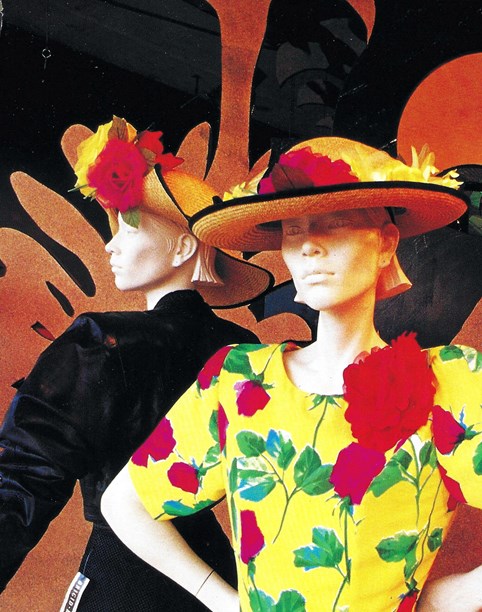
Window display at Barbara Lee on Broadway, Newmarket, Auckland.
These were clothes that wore the wearer, not the other way round. They were exuberant and great fun while they lasted but enough was enough.
Lacroix's other notable contribution to the fashion of the decade was the bubble dress aka the pouf. All the rage in Europe, it enjoyed a brief success here, thanks to designers like Susan Holmes, Trelise Cooper, Keith Matheson and Earlybird, but one blink and it too was gone.
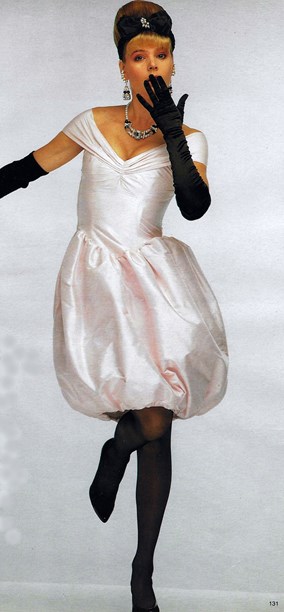
Keith Matheson tea-rose satin pouf dress with a decollete bodice and draped shoulders. Image © Fashion Quarterly, spring 1987.
Sumptuous fabrics such as taffeta, tissue lame, velvet, satin and silk in all its guises, set the opulent tone for short, sexy evening dresses, richly embellished with frills, ruffles, fancy trims and enormous bows. Sequinned sheaths and ruched tubes of fabric layered over the hips and culminating in a bouffant skirt were two significant after-five silhouettes. The black dress, at its most seductive when long and lean, was another evening star.
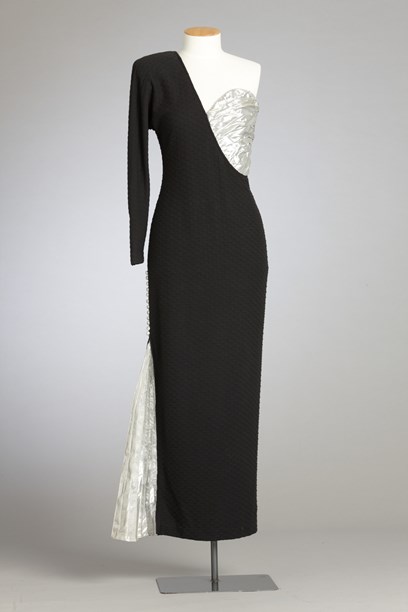
Fashion designer Megan Douglas entered this dress in the Benson & Hedges Fashion Design Awards Young Designer section in 1986. Image © CC BY 4.0 International Licence
With the freeing up of the economy by the Labour Government in 1984, big business boomed and New Zealand was on a roll. The newly rich partied and spent up large like there was no tomorrow and putting on the ritz was part of the picture. Show me your designer label and I'll show you mine.
Show-off clothes called for show-off scents. A perfume that packed a powerful punch, such as Calvin Klein's Obsession, Christian Dior's Poison and Loulou by Cacharel, was as important a fashion accessory as a designer handbag. Giorgio Beverley Hills, another 1980s' heavy-hitter, was banned by certain restaurants in the US because it was considered intrusive and put diners off their food. There is no evidence of any such ban being put in place here.
The Royal wedding in 1981, whetted the public appetite for romantic weddings and New Zealand designers benefited as a result. Kevin Berkahn made ten exact replicas of Princess Diana's ivory silk dress and Jane Mabee (Betsy Ruff) was another designer called upon to create elaborate bridal gowns after the event.
One trend closely associated with the 1980s is the power suit, the dress-to-impress uniform of the aspiring career woman and her newly dominant role in the workforce. Massive shoulder-pads were not an option; they were mandatory. Getting the length of the skirt right depended on what was worn on top. The shorter and narrower the skirt, the shapelier and more curvaceous the jacket. Longer skirts were usually seen in the company of elongated jackets cut on softer, more unstructured lines, channelling Armani.
Other signs of the times were androgynous looks, in which females adopted a neuter pose, knickerbockers, luxe leathers, exercise-wear as street-wear and t-shirts with graffiti or designer logos. 1987 was the summer of 'washed' denim. Rock-washed, acid-washed and stone-washed one could comprehend but moon-washed really challenged the imagination.
When Meryl Streep and Robert Redford went on safari in Out of Africa in 1985, the fashion world followed. Animal print dresses or a big-game hunter's jacket worn with long cuffed shorts or trousers (best in beige linen) were just the ticket for venturing into the urban jungle.
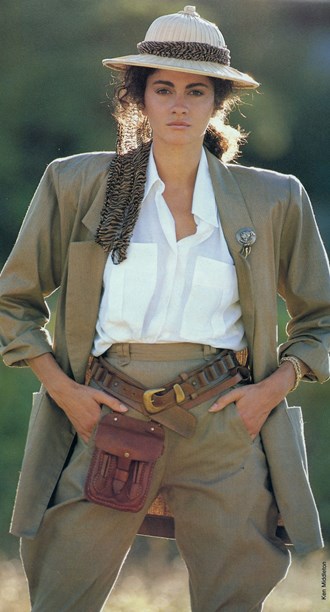
Safari separates by Thornton Hall. Image © Fashion Quarterly.
In their choice of glamour get-ups, women often referred to the American soap operas Dynasty and Dallas and New Zealand's home-grown soap Gloss for inspiration.
Pitching itself as the bible for dedicated followers of fashion, Fashion New Zealand (later Fashion Quarterly), founded in 1980, presented each new look and trend in Vogue-like format. It was followed, in 1983, by ChaCha, a magazine dedicated to celebrating fashion's intellectual 'other side'.
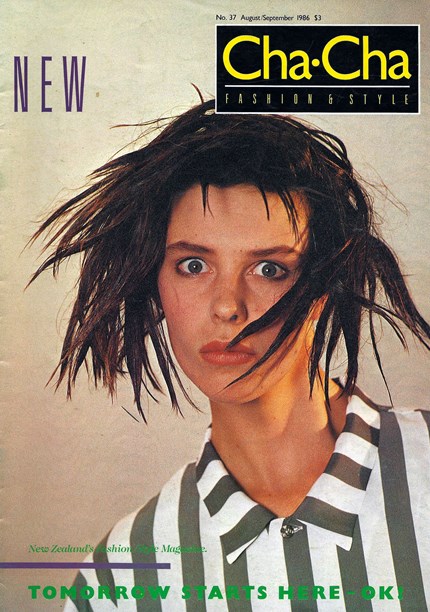
ChaCha cover photographed by Kerry Brown. Acetate shirt by Streetlife. Image © Kerry Brown and ChaCha magazine.
Offering an antidote to high fashion status dressing, ChaCha provided a showcase for Zambesi, Marilyn Sainty, Alison Hutton, Doris de Pont, Streetlife, Workshop and other designers who challenged the status quo. Their clever juxtaposition of disparate shapes and unexpected materials resonated with a street-wise and predominantly younger market and club-land habitués.
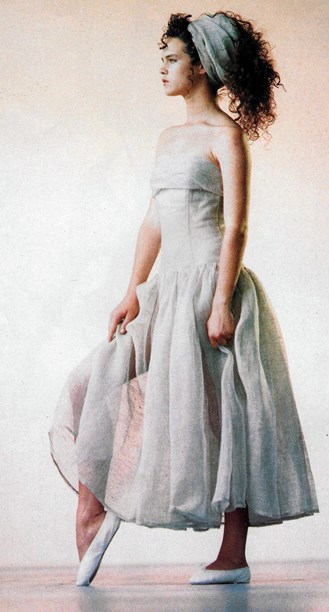
Irish linen party dress by Marilyn Sainty, summer 1986. Image © ChaCha magazine.
The miracle stretch fibre Lycra totally transformed exercise and beachwear. As the decade progressed, swimsuits became sleeker, sexier and more daringly cut, all the better to show off a gym-toned body. Swimwear labels Moontide and Expozay established themselves on the global market and took New Zealand style to the world.
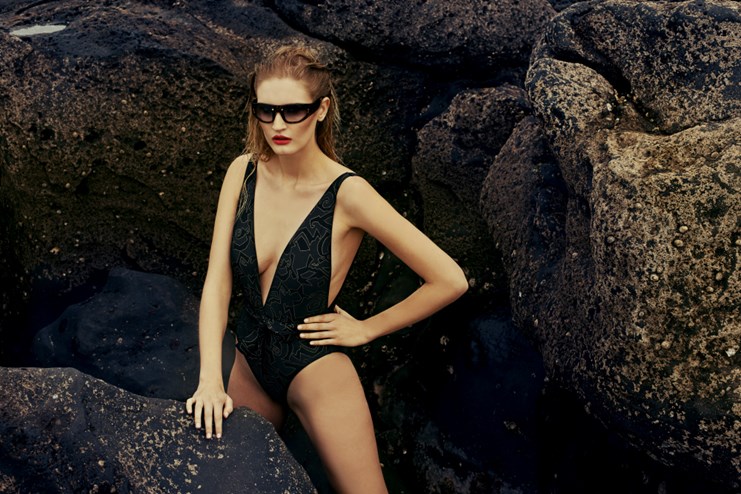
Black and gold swimsuit by Expozay, 1980s.
The 1980s were witness to the rise of the New Zealand fashion designer, many of whom opened their own shops. In Christchurch, Barbara Lee, who started her business in 1968 and Rosaria Hall who began designing in the late 1970s, were joined by Gaye Bartlett, Judith Malcolm and Robert Gormack, milliner Ailie Miller (Dollie Vardin) and leather designers Caroline Moore, Nita Henry and Brigid Brock, making the Garden City a formidable fashion force.
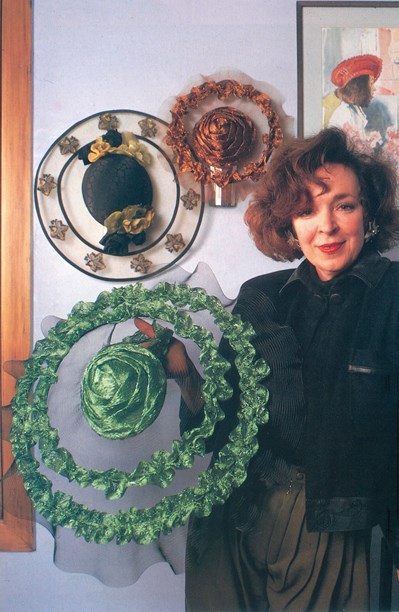
Ailie Miller in her Christchurch boutique, 1988.
Fashion shows staged throughout the 1980s tended to be big-budget, black-tie affairs, awash with champagne and beautiful people. 600 guests attended Patrick Steel's collection show at the Auckland War Memorial Museum in 1985 and the building, illuminated with pink floodlights, was visible for miles. More intimate 'happenings', held regularly in trendy nightspots, provided a hedonistic mix of fashion, live music, dancing and food.
After the stockmarket crash in 1987, the mood began to change. As the recession kicked in, over-indulgence gave way to restraint.
The removal of tariff protection exposed local clothing manufacturers to greater competition from imports, resulting in the loss of thousands of jobs over time. Those with their own retail outlets fared better while others, pragmatic about the changes, viewed the situation as a two-way street and began exporting their ranges overseas.
The credit card limit was another worry but designers like Hall Corporation's Wendy Hall remained positive. "People aren't spending now," she said in Fashion Quarterly, "but sooner or later ego comes into play - we all want to look our best."
Text by Cecilie Geary. Banner image of dresses by Mr K for Pumperdink (left) and Barbara Lee from Fashion Quarterly, Autumn 1988. Makeup by Nikki Lovrich, photo by Max Thomson, model Charlotte Dawson.
Published May 2020.